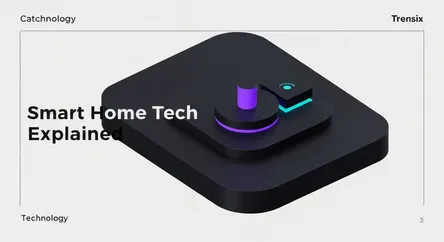Technology
Smart Home Tech Explained

Discover smart homes: interconnected devices that automate and control your home's systems like lighting and security for ultimate convenience.
What is it?
A smart home is a residence equipped with a network of internet-connected devices that work together to automate and control household systems. This technology, often part of the Internet of Things (IoT), allows users to manage functions like lighting, climate, entertainment systems, and security appliances remotely via a smartphone or a central hub, such as an Amazon Echo or Google Nest. These devices communicate with each other to create a seamless, responsive living environment tailored to the user's preferences and routines.
Why is it trending?
The popularity of smart home technology is soaring due to its promise of convenience, efficiency, and security. As devices become more affordable and easier to install, more homeowners are adopting them. The ability to control your home with voice commands or a simple tap on an app is highly appealing. Furthermore, smart thermostats and lighting can significantly reduce energy consumption, leading to lower utility bills. The desire for enhanced security through smart cameras, locks, and sensors also drives the trend, offering homeowners peace of mind whether they are at home or away.
How does it affect people?
Smart homes fundamentally change how people interact with their living spaces, making daily life more streamlined and efficient. For many, it means added convenience, like lights that turn on automatically upon arrival or coffee that brews on a schedule. It enhances security, providing real-time alerts and remote access to cameras. For individuals with disabilities or mobility issues, smart technology can offer greater independence. However, it also introduces concerns about data privacy and cybersecurity, as connected devices can be potential vulnerabilities if not properly secured, requiring users to be mindful of their digital footprint.